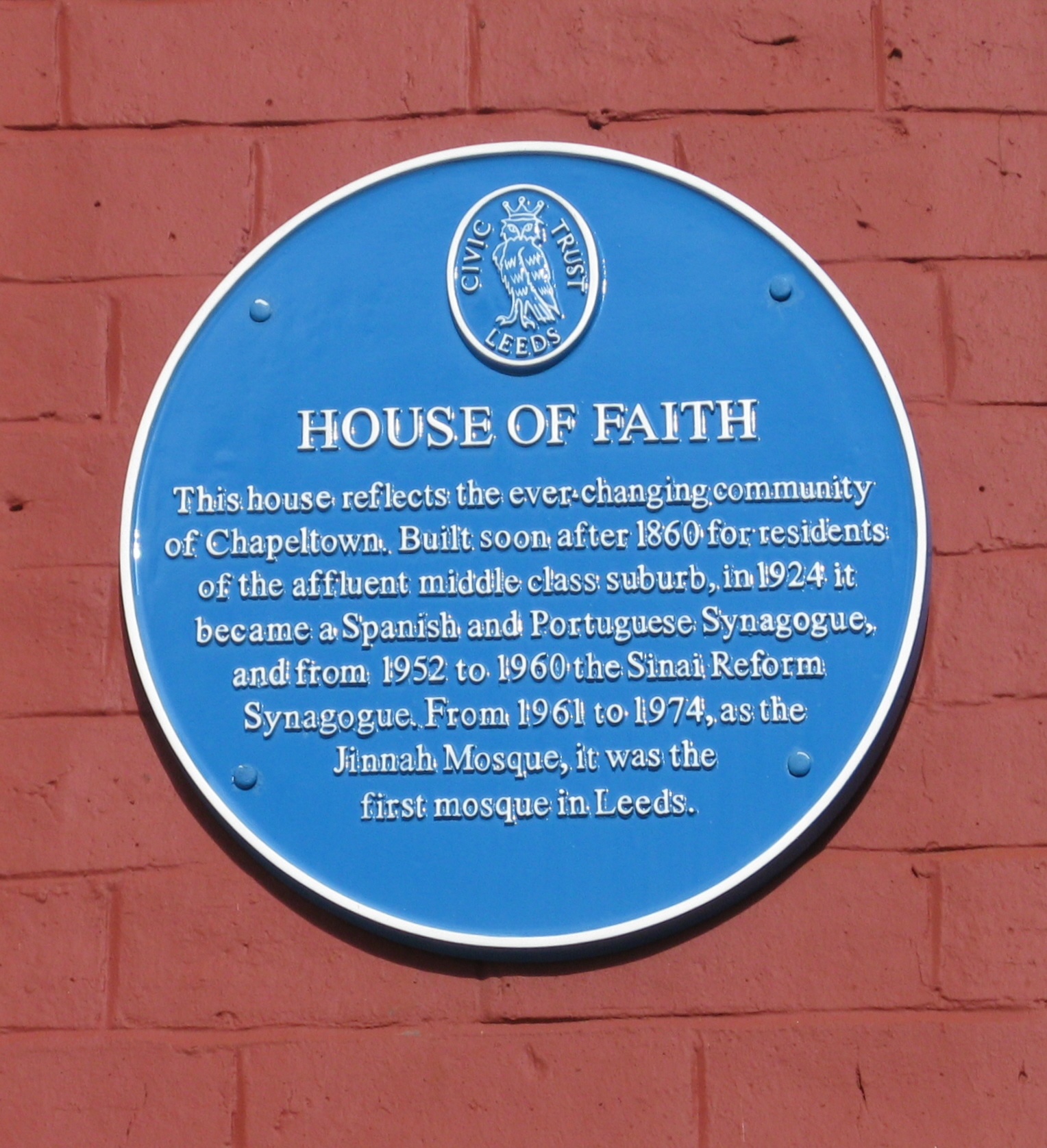Leeds' Blue Plaques - commemorating the lives of Leeds people

This is the first post after a loooong time. Parental leave and then a pandemic don't lead to blogging it seems. But here's a new year, if a strange one, and a chance to get this blog back up and running. I'll be writing on this blog about families' remembrance practice as I'm drafting a book on the topic, and we'll have some guest posts from my MA students studying 'Death, Dying and the Dead in Twentieth-Century Britain' in the coming months.
But I'll start with a really important initiative that I've been honoured to be involved with - a review of the Leeds Blue Plaques scheme, which is run by Leeds Civic Trust. This review is going to examine both the existing plaques and the way that plaques are awarded. It's led by Susan Pitter, whose vast expertise in history and heritage is invaluable, along with a group of experts from a range of sectors - and I'm delighted to be one of those on the review board. The review is tackling the fact that Leeds' blue plaques do not reflect the diversity of people and communities across Leeds, and fail to celebrate many aspects of Leeds' diverse history. In the wake of the Black Lives Matter movement, which has long roots, but became particularly powerful and visible in 2020 in the wake of the murder of George Floyd and others, in Britain and countries around there world there has been renewed energy to think through carefully whose lives are celebrated and who matters. The pulling down of the Edward Colston statue in Bristol provided an extra push for organisations across Britain to review their practices. In particular, questions were asked about why those who committed atrocities, and in particular were complicit and involved with slavery and the slave trade, are celebrated through statues, plaque and the naming of buildings and the like, whilst other histories and communities, not least Black British people, are ignored and erased within public history (as well as academic history). In Leeds, the Council has conducted a review of statues in the city, and as part of the Leeds Civic Trust review, we're asking as many people as possible to fill in our survey.
Remembering those who died is a part of all of our lives - most of us own things or do things that remind us of someone who has died, or perhaps associate them with particular places. Many of us actively work to remember those who matter to us, and pass that on to others. But the question of who gets to be remembered and whose lives are actively and publicly celebrated is a deeply political one. Some people's lives are much better recorded and documented than others, within archives and within the very fabric of the cities and towns in which we live. And some lives are, within British society, understood to be more expendable than others: people of colour, in particular, are subject to greater violence and threat, especially at the hands of the police. The case of David Oluwale, who lost his life at the hands of the police in Leeds in 1969 is one illustration of this long history. And it has taken an extensive campaign to mark the tragedy of David Oluwale's death, to 'reverse this ‘un-recording’' of his life as the Remember Oluwale charity puts it, when describing its aims. Most recently, the charity has successfully campaigned for a permanent memorial to David Oluwale, which will take the form of a sculpture designed by renowned artist Yinka Shonibare in a new part in the centre of Leeds.
It's no surprise that the white men dominate the blue plaques currently in existence in Leeds; race, class and gender deeply influence whose lives have been recorded and whose lives are celebrated after their death. I hope that this review will ensure that marking the life of someone who has made a mark on Leeds is much more accessible to everyone, and a much fairer process.
There is a lot of work to do. The white, elite, male version of history that dominates our society today isn't going to go away quickly, and many people are deeply invested in a version of the past that erases the contributions of women, people of colour, LGBTQ* people and those with disabilities and erases their marginalisation, persecution and murder. The many examples of atrocities and murder of colonised people at the hands of the British empire is one example of this. But there is hope too - a question has been raised about who gets to be remembered, whose lives matter. We have to keep pushing to make sure that question is answered.
